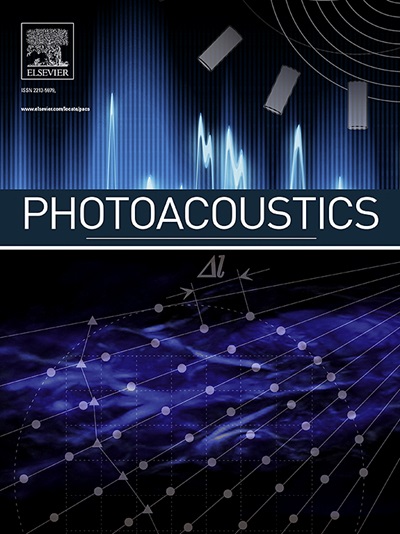用于氢和碳氢化合物的快速和同步传感的电导光声光谱
IF 6.8
1区 医学
Q1 ENGINEERING, BIOMEDICAL
引用次数: 0
摘要
准确、快速地检测氢和碳氢化合物对于现代能源、工业和环境系统的安全和效率至关重要。然而,这些物种的选择性和同时定量仍然是一个重大的技术挑战。在这里,我们介绍了电导光声光谱(ConPAS),这是一种在单个设备中结合电导共振调制和石英增强光声光谱的集成传感方法。通过将石英音叉(QTF)与催化铂微丝桥接,ConPAS可以从统一的电信号中同时提取氢和碳氢化合物浓度:氢通过频率分析量化,而碳氢化合物含量通过幅度分析同时确定。实验表明,氢气的最小检出限为0.69 %,丙烷为40.26 ppm,甲烷为133.7 ppm,响应时间为毫秒级,线性良好(R²>;0.99)。模块化结构允许通过材料替代灵活适应其他分析物,为同时,多组分气体传感提供可扩展和通用的解决方案。这项工作建立了ConPAS作为一个强大的、校准兼容的平台,用于富氢环境中的综合气体分析,对安全监测、过程控制和先进的能源应用具有广泛的意义。本文章由计算机程序翻译,如有差异,请以英文原文为准。
Conductance-photoacoustic spectroscopy for fast and concurrent sensing of hydrogen and hydrocarbons
Accurate and rapid detection of hydrogen and hydrocarbons is critical for safety and efficiency in modern energy, industrial, and environmental systems. However, selective and simultaneous quantification of these species remains a significant technical challenge. Here, we introduce conductance–photoacoustic spectroscopy (ConPAS), an integrated sensing approach that combines conductance-based resonance modulation with quartz-enhanced photoacoustic spectroscopy in a single device. By bridging a quartz tuning fork (QTF) with a catalytic platinum microwire, ConPAS enables concurrent extraction of hydrogen and hydrocarbon concentrations from a unified electrical signal: hydrogen is quantified by frequency analysis, while hydrocarbon content is determined by amplitude analysis simultaneously. Experiments demonstrate minimum detection limits of 0.69 % for hydrogen, 40.26 ppm for propane, and 133.7 ppm for methane, with millisecond response time and excellent linearity (R² > 0.99). The modular architecture allows flexible adaptation to other analytes via material substitution, offering a scalable and versatile solution for simultaneous, multi-component gas sensing. This work establishes ConPAS as a powerful, calibration-compatible platform for integrated gas analysis in hydrogen-enriched environments, with broad implications for safety monitoring, process control, and advanced energy applications.
求助全文
通过发布文献求助,成功后即可免费获取论文全文。
去求助
来源期刊

Photoacoustics
Physics and Astronomy-Atomic and Molecular Physics, and Optics
CiteScore
11.40
自引率
16.50%
发文量
96
审稿时长
53 days
期刊介绍:
The open access Photoacoustics journal (PACS) aims to publish original research and review contributions in the field of photoacoustics-optoacoustics-thermoacoustics. This field utilizes acoustical and ultrasonic phenomena excited by electromagnetic radiation for the detection, visualization, and characterization of various materials and biological tissues, including living organisms.
Recent advancements in laser technologies, ultrasound detection approaches, inverse theory, and fast reconstruction algorithms have greatly supported the rapid progress in this field. The unique contrast provided by molecular absorption in photoacoustic-optoacoustic-thermoacoustic methods has allowed for addressing unmet biological and medical needs such as pre-clinical research, clinical imaging of vasculature, tissue and disease physiology, drug efficacy, surgery guidance, and therapy monitoring.
Applications of this field encompass a wide range of medical imaging and sensing applications, including cancer, vascular diseases, brain neurophysiology, ophthalmology, and diabetes. Moreover, photoacoustics-optoacoustics-thermoacoustics is a multidisciplinary field, with contributions from chemistry and nanotechnology, where novel materials such as biodegradable nanoparticles, organic dyes, targeted agents, theranostic probes, and genetically expressed markers are being actively developed.
These advanced materials have significantly improved the signal-to-noise ratio and tissue contrast in photoacoustic methods.
 求助内容:
求助内容: 应助结果提醒方式:
应助结果提醒方式:


